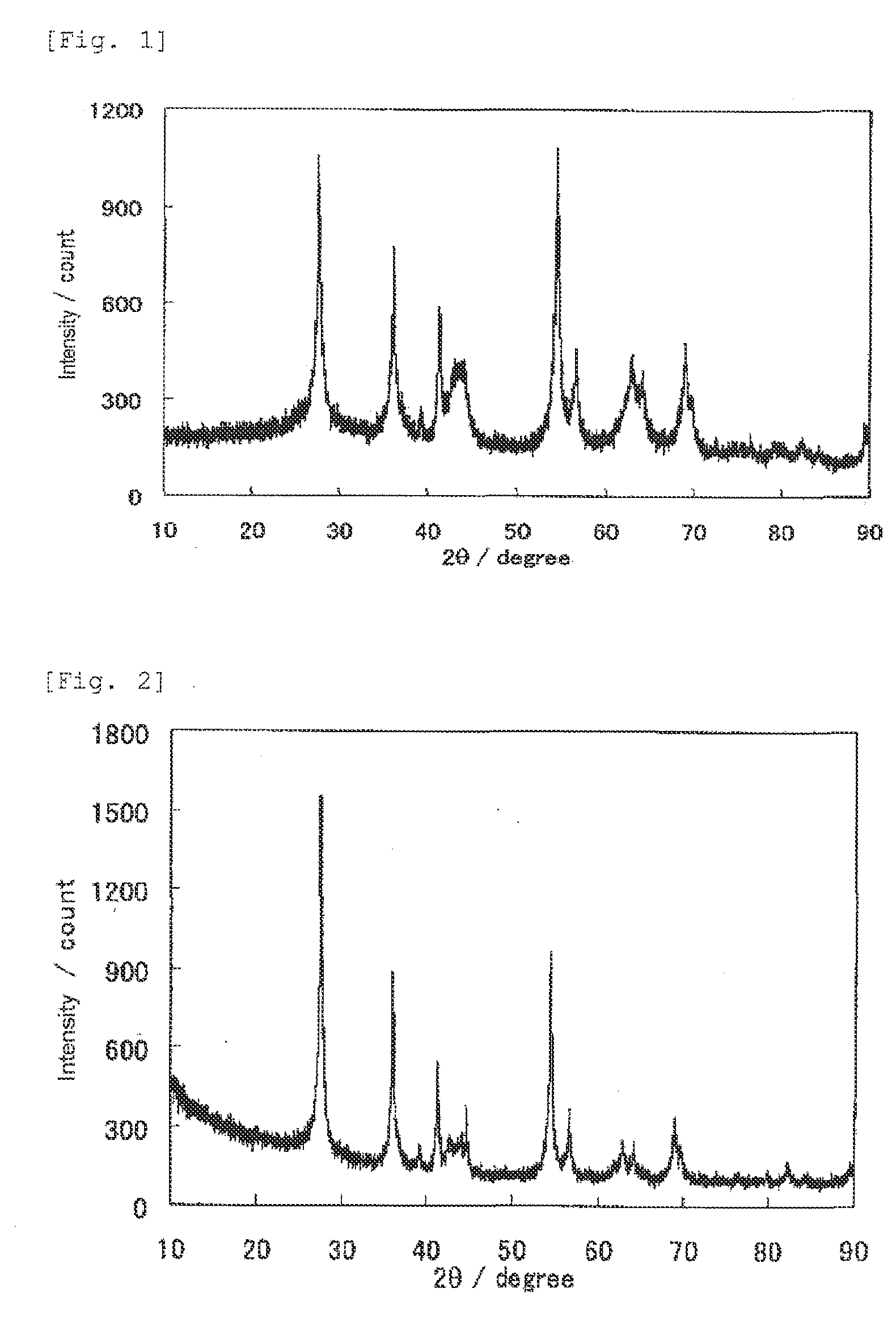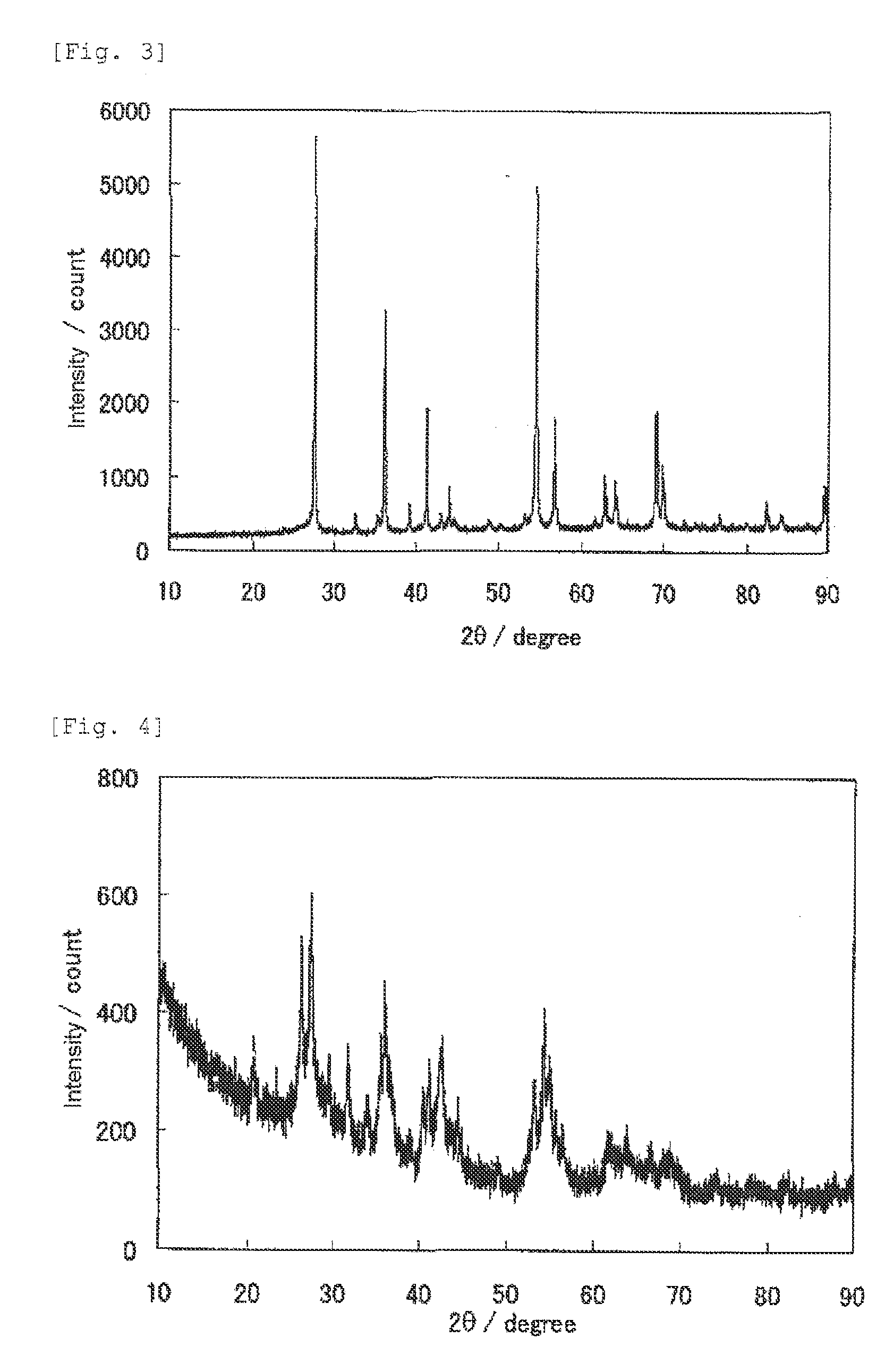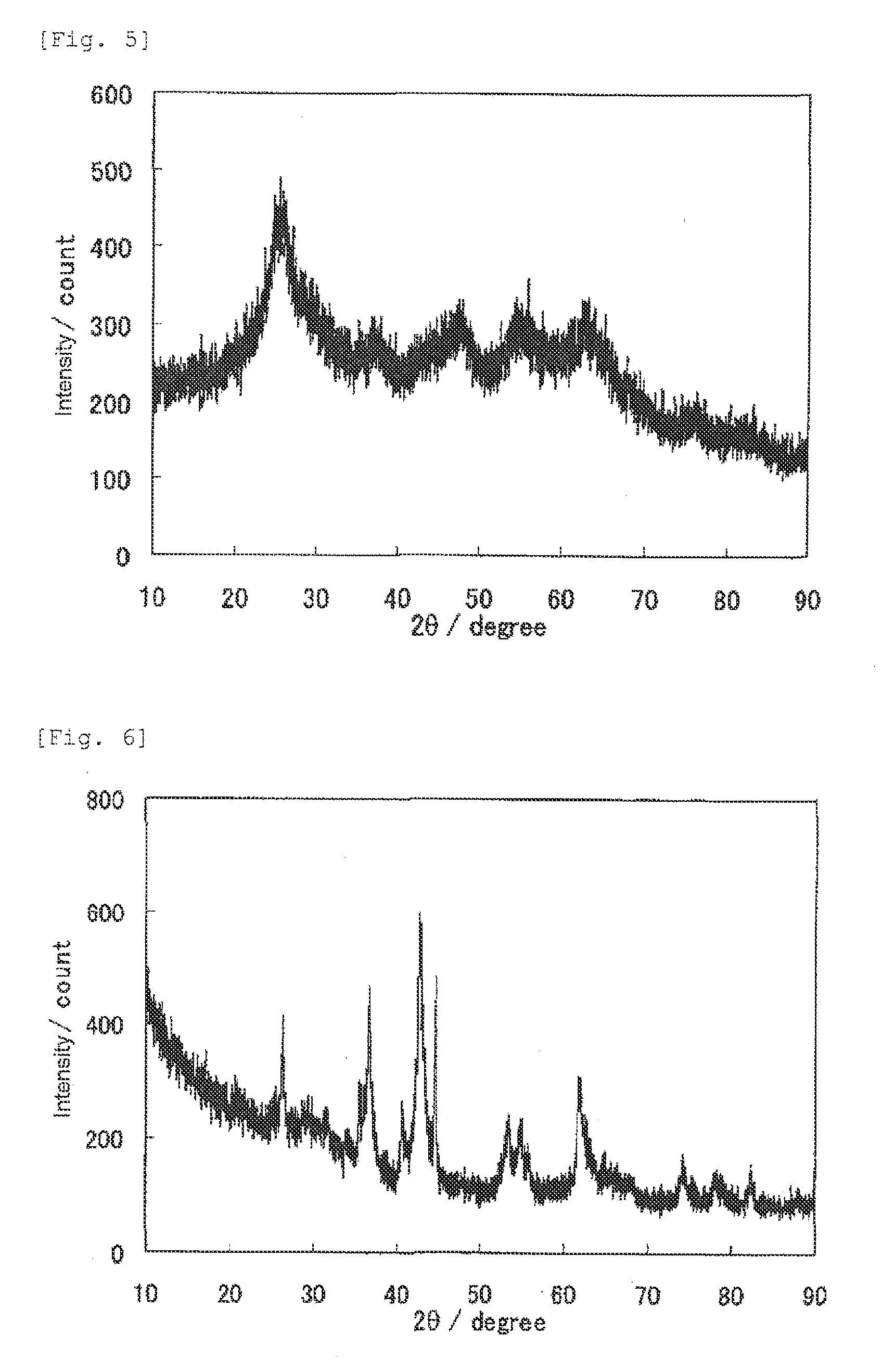Process for producing fuel cell electrode catalyst, process for producing transition metal oxycarbonitride, fuel cell electrode catalyst and uses thereof
- Summary
- Abstract
- Description
- Claims
- Application Information
AI Technical Summary
Benefits of technology
Problems solved by technology
Method used
Image
Examples
example 1-1
1. Production of Catalyst
[0366]5 mL of titanium tetraisopropoxide (Junsei Chemical Co., Ltd.) and 5 mL of acetylacetone (Junsei Chemical Co., Ltd.) were added to a solution of 15 mL of ethanol (Wako Pure Chemical Industries, Ltd.) and 5 mL of acetic acid (Wako Pure Chemical Industries, Ltd.), and stirred at room temperature, to prepare a titanium-containing mixture solution. On the other hand, 2.507 g of glycine (Wako Pure Chemical Industries, Ltd.) was added to 20 mL of pure water, and stirred at room temperature and completely dissolved, to prepare a glycine-containing mixture solution. The titanium-containing mixture solution was slowly added to the glycine-containing mixture solution, to provide a transparent catalyst precursor solution. The catalyst precursor solution was heated and stirred with a rotary evaporator in a nitrogen atmosphere under reduced pressure with the temperature of a hot stirrer set at about 100° C., and thereby the solvent was slowly evaporated. The solven...
example 1-2
1. Production of Catalyst
[0371]5 mL of titanium tetraisopropoxide (manufactured by Junsei Chemical Co., Ltd.) and 5 mL of acetylacetone (manufactured by Junsei Chemical Co., Ltd.) were added to a solution of 15 mL of ethanol (manufactured by Wako Pure Chemical Industries, Ltd.) and 5 mL of acetic acid (manufactured by Wako Pure Chemical Industries, Ltd.), and stirred at room temperature, to prepare a titanium-containing mixture solution. On the other hand, 2.507 g of glycine (manufactured by Wako Pure Chemical Industries, Ltd.) and 0.153 g of iron acetate (manufactured by Aldrich) were added to 20 mL of pure water, and stirred at room temperature and completely dissolved, to prepare a glycine-containing mixture solution. The titanium-containing mixture solution was slowly added to the glycine-containing mixture solution, to provide a transparent catalyst precursor solution. The catalyst precursor solution was heated and stirred with a rotary evaporator in a nitrogen atmosphere under...
example 1-3
1. Production of catalyst
[0376]5 mL of titanium tetraisopropoxide (manufactured by Junsei Chemical Co., Ltd.) and 5 mL of acetylacetone (manufactured by Junsei Chemical Co., Ltd.) were added to a solution of 15 mL of ethanol (manufactured by Wako Pure Chemical Industries, Ltd.) and 5 mL of acetic acid (manufactured by Wako Pure Chemical Industries, Ltd.), and stirred at room temperature, to prepare a titanium-containing mixture solution. On the other hand, 2.507 g of glycine (manufactured by Wako Pure Chemical Industries, Ltd.) and 0.306 g of iron acetate (manufactured by Aldrich) were added to 20 mL of pure water, and stirred at room temperature and completely dissolved, to prepare a glycine-containing mixture solution. The titanium-containing mixture solution was slowly added to the glycine-containing mixture solution, to provide a transparent solution. The solution was heated and stirred with a rotary evaporator in a nitrogen atmosphere under reduced pressure with the temperature...
PUM
| Property | Measurement | Unit |
|---|---|---|
| Temperature | aaaaa | aaaaa |
| Temperature | aaaaa | aaaaa |
| Percent by volume | aaaaa | aaaaa |
Abstract
Description
Claims
Application Information
 Login to View More
Login to View More - Generate Ideas
- Intellectual Property
- Life Sciences
- Materials
- Tech Scout
- Unparalleled Data Quality
- Higher Quality Content
- 60% Fewer Hallucinations
Browse by: Latest US Patents, China's latest patents, Technical Efficacy Thesaurus, Application Domain, Technology Topic, Popular Technical Reports.
© 2025 PatSnap. All rights reserved.Legal|Privacy policy|Modern Slavery Act Transparency Statement|Sitemap|About US| Contact US: help@patsnap.com



